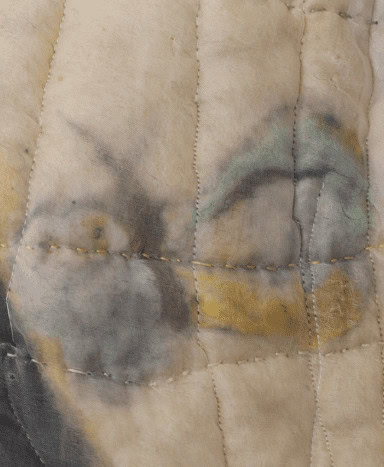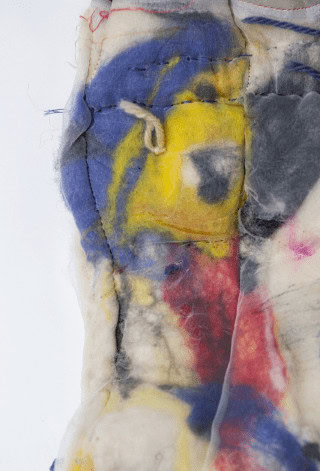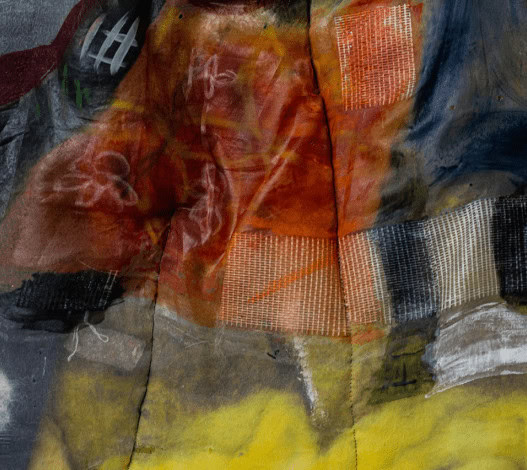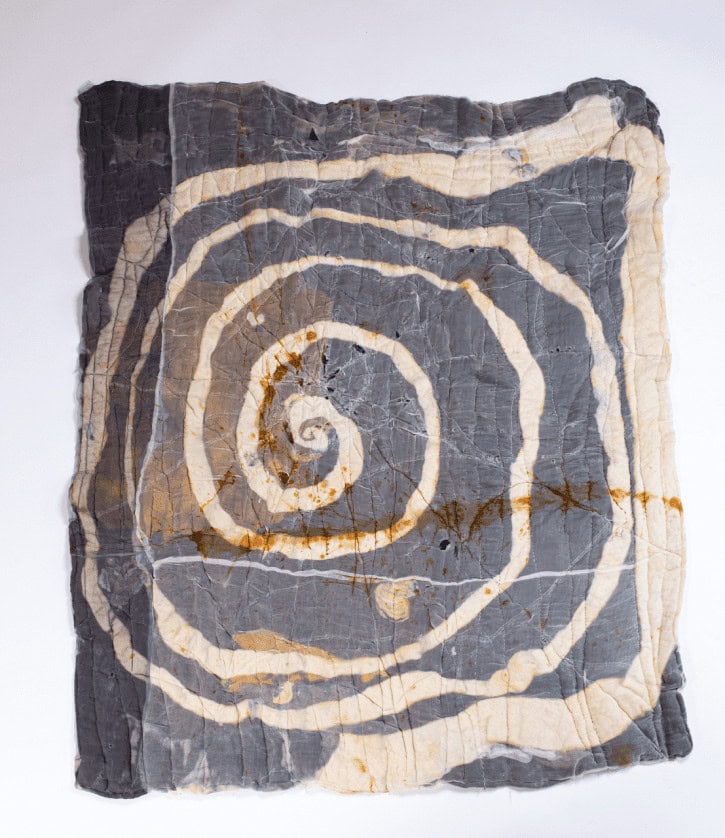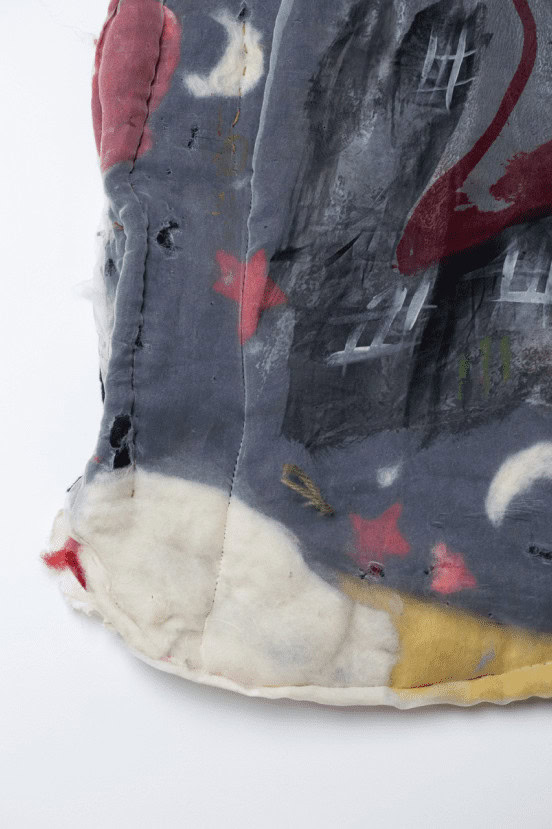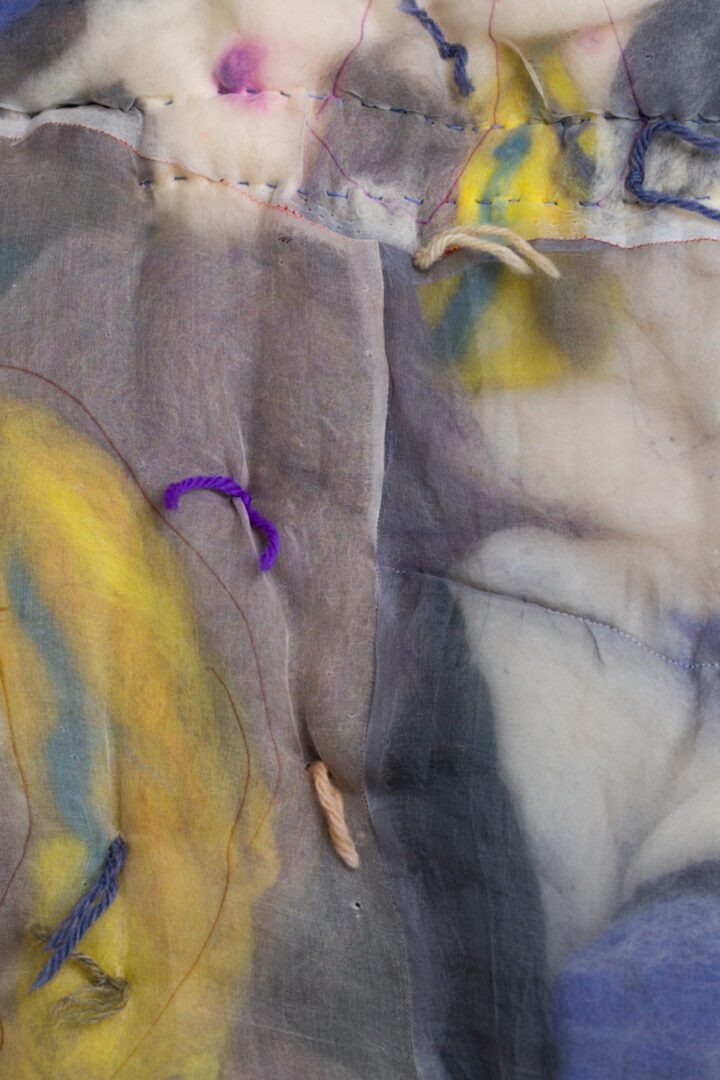
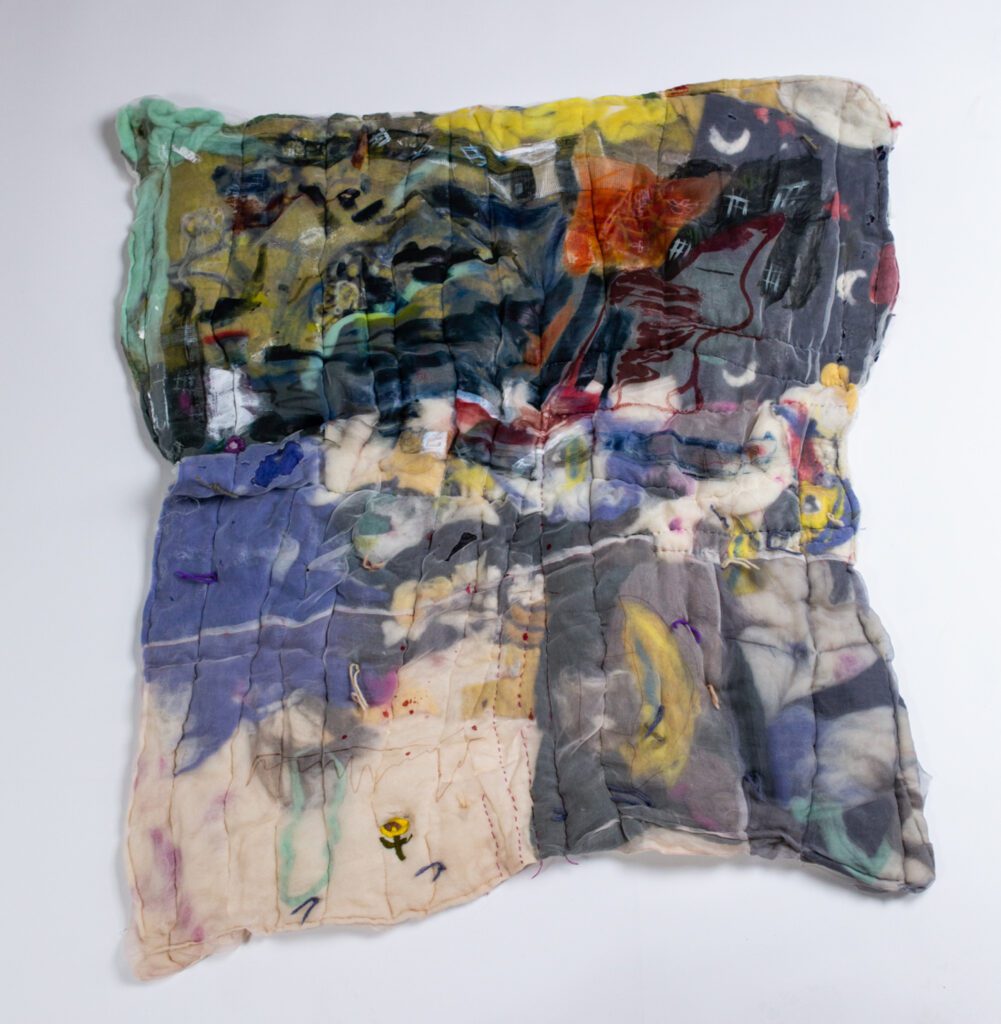
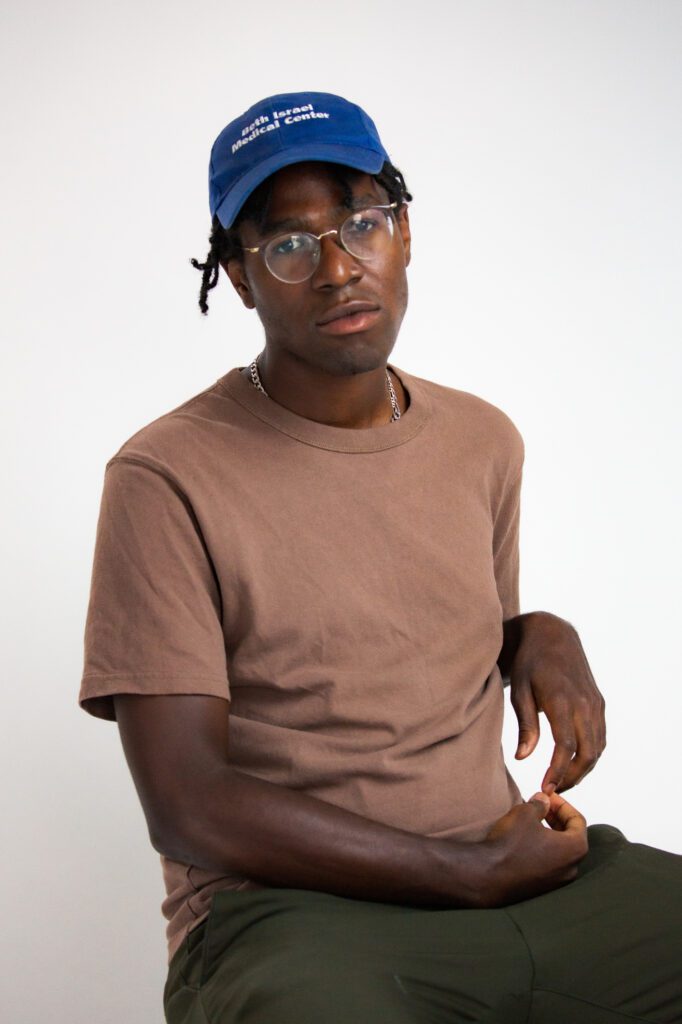
The quilted works of Brooklyn artist Justin Chance address what he refers to as “the melancholy of the hand-me-down.” When quilts are passed down, they transfer a certain nostalgia. The quilt’s identity lingers in an isolated state of partial newness: imbued by memory, yet ready to imprint again. Chance ventures: “Culture, language, and aesthetics can also be considered hand-me-downs. Quilts are but one example.”
Chance’s pieces are made of fabric, and strictly adhere to a rigorous definition of what constitutes a quilt: a minimum of three layers of fabric (known as the top fabric, batting, and the backing) stitched together either by hand or machine. As in typical quilting, his aesthetic focus lies in the top fabric. The interior component however, is where Chance departs from quilting norms, choosing to spend the majority of his toil laboriously felting this layer by hand. Though never directly seen, the incredible labor required in this extra step imbues the work with additional value, acting as metaphor for what we know, but cannot see, when we are gifted an un-new quilt.
The inner layer, encased in a transparent fabric that is fastened by thread, allows Chance to hide and protect what he deems precious. This layer symbolizes the insular and contemplative experience of making. While it is screened from direct view, we are still able to sense its qualities. Color, pattern, texture, and tone, brought into the studio from the outside world, are subtly evident in the form.
While Chance won’t stray from the structural definition of a quilt, he denounces their quilt identity, referring to them as wall-hangings. “Functionality or care-taking feels antithetical to everything I’m interested in, art-wise. The works are stripped of their utility and therefore cannot exist in the domestic space as such.”
Chance’s wall-hangings invert the known ratios in the equation of quilt-building, with a disproportionate expenditure of labor allotted to the deliberately worked middles. Though concealed, the armature of this stratum is viscerally felt, its density defining the form. There is a capture of memory as a quilt accompanies its owner over years, an accrual mirrored in the worked weight of Chance’s battings. These works reflect how a quilt bears the invisible heft of nostalgia: the unseen middle layer made weighty by human effort.
Learn more about the art of Justin Chance.
THERE IS A CAPTURE OF MEMORY AS A QUILT ACCOMPANIES ITS OWNER OVER YEARS, AN ACCRUAL MIRRORED IN THE WORKED WEIGHT OF CHANCE’S BATTINGS.

